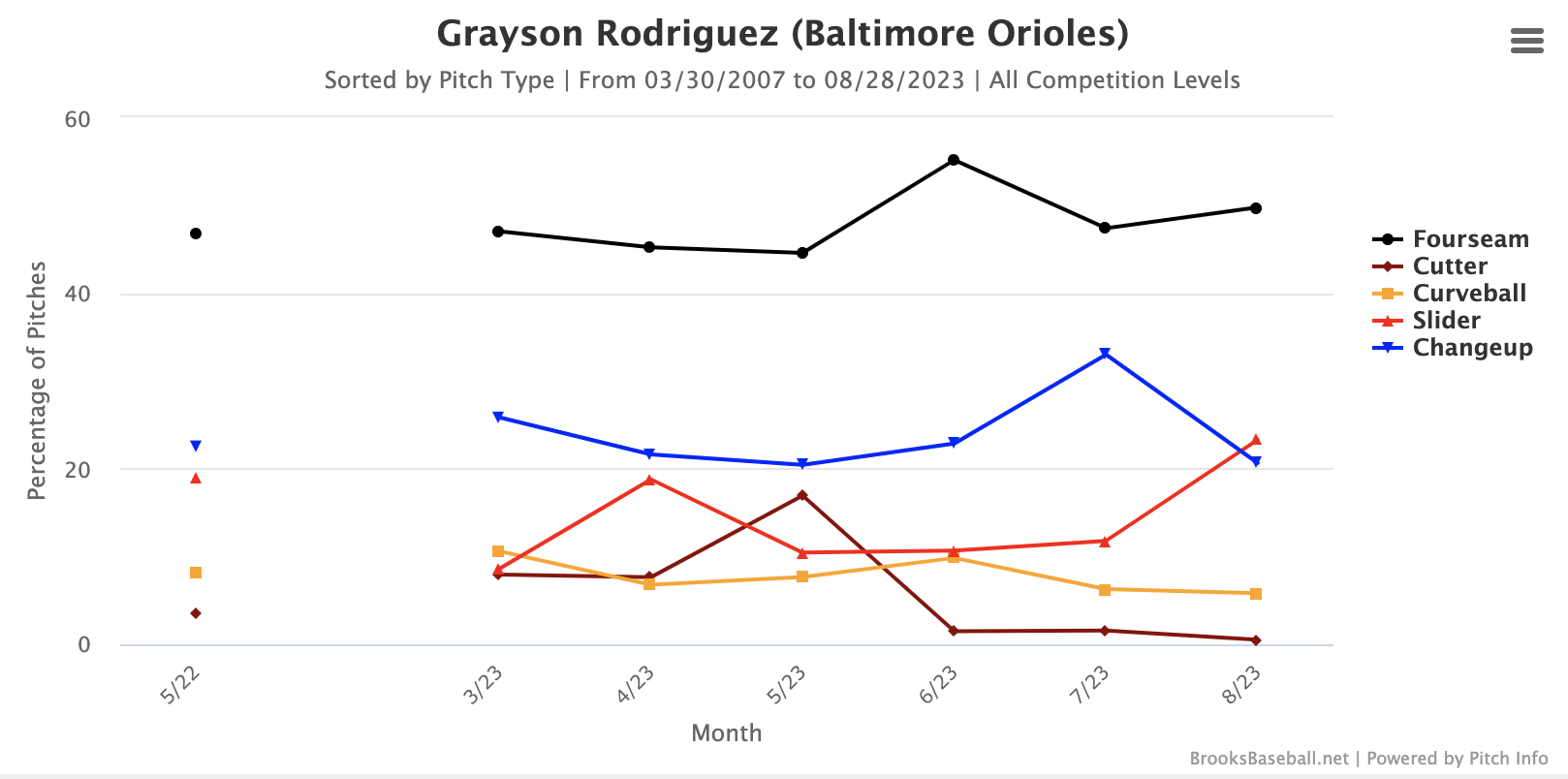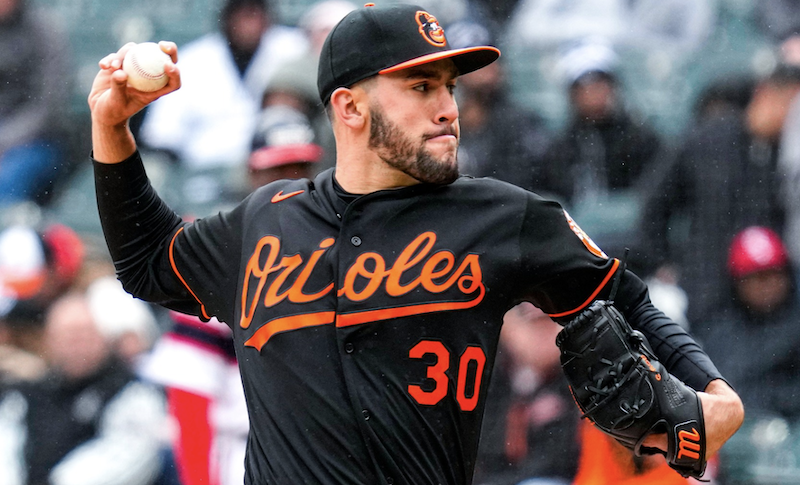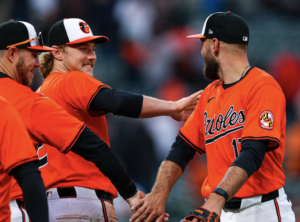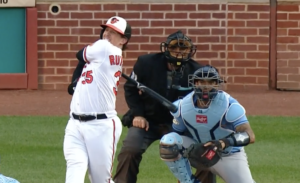The Orioles’ pitching hasn’t been perfect in 2023, but it has been much better than expected. While they are hovering around league average in ERA and FIP, they have been better than those stats suggest. This is impressive because the Orioles don’t have many household names in the rotation, yet they have made it work.
They’ve been led by two pitchers who’ve turned it on in the second half. One is Kyle Bradish, who might be the most underrated pitcher in baseball, and the other is Grayson Rodriguez. Rodriguez will be a story for years to come with this organization. The story of how a once prized prospect struggled so severely and overcame it all to become something special.
While we know Rodriguez is talented, how he is succeeding right now is interesting, so let’s dive in.
Grayson himself doesn’t need much of an introduction. He was drafted out of High School in 2018 and developed under Mike Elias. He eventually became the number one pitching prospect and should have made his Major League debut in 2022, but a lat injury sidelined him, likely just days before a call-up. He did come back in September, but it was too late.
The focus was now on making the team out of Spring Training in 2023, which didn’t happen. The fan outcry for Grayson not making it was insanely loud, but he didn’t even deserve it. No, it had nothing to do with service time. Grayson was legitimately bad in Spring Training, and instead, the spot was given to Tyler Wells, who became the team’s best starter in the first half.
It wouldn’t be long until we saw Grayson again. In a weird circumstance, Bradish got injured in the fourth game of the season, which opened the door for Grayson to make his major league debut. Most fans will say this when the struggles started, but he wasn’t that awful in April. He had a 4.07 ERA, but the WHIP told a different story (1.40, unsustainably high). He also had a home run issue.
Still, for a 23-year-old rookie, there were plenty of flashes to prove that this was the promised guy. All he needed was a little seasoning, and then he would prosper.
Then came May, and the nightmare scenario. His ERA jumped to 7.35, WHIP to 1.74, and he gave up more home runs this month (11) than he walked batters (10). It all came to a head with a particularly awful start against the Rangers when he gave up eight runs and three home runs in only 3.1 innings.
This would be the last time we would see Grayson in the majors for over a month.
Grayson had to rein in the home runs, and did just that in Triple-A. He also made some tweaks to his repertoire, completely ditching his cutter and increasing usage of both his slider and his 100-MPH four-seamer.

He found success in the minors, but that was nothing new. If he wanted to change the narrative, he would have to apply what he learned to the majors.
Luckily, he would do just that. In July, Grayson was a completely different pitcher. In three games in July, he posted an ERA of 3.18 and a WHIP of 1.12. The ERA could have been even better if not for the O’s bullpen’s penchant to allow inherited runners to cross the plate. He was striking more batters out, walking fewer, and, more importantly, keeping the ball in the park. The only issue was that he wasn’t going deep into games, which has always been a critique of him.
It seemed like Rodriguez had control of his issues, but could he go deeper? The month of August answered that question with a resounding yes.
In three of his four starts in August, completed at least six innings. His best start of his career came against the Padres when he went seven innings and gave up one run, walked one, and struck out six. The overall numbers in August show a 3.28 ERA, a 1.05 WHIP, only two home runs allowed, seven walks, and twenty strikeouts.
Those numbers are great, but the question becomes, why? Why did Grayson struggle so much? Well, for one, he wasn’t ready to be called up. This may be controversial, but Rodriguez wasn’t prepared for a call-up when it happened. He was terrible in spring training and needed time to adjust after returning from an injury. He was in the majors because of an injury to Bradish, not because he was ready. Two, Grayson needed to adjust the way he attacked major league hitters. His fastball was just too hittable, and he couldn’t command it, along with using a bad cutter and a breaking pitch that was way too wild.
Of course, he is simply making better pitches. The movement profile on his pitches is up since his call-up, and the Orioles also slightly tweaked his delivery.
Rodriguez will become the poster child for not giving up on prospects when they struggle. No matter how bad a prospect looks in his first couple of games, the finger will always be pointed at Grayson. Colton Cowser looks awful in his first couple of at-bats? That’s fine; look how Grayson figured it out. He will be back. This is how it works.
Grayson Rodriguez is a special talent who was called up too early but learned from his struggles and has re-made himself into that top pitcher we all thought he would be.
He and Bradish have been shining stars for this new pitching development system, and have led this rotation in the second half.









